Prompt: An infographic style illustration depicting the developing child and adolescent brain from ages 1 to 8 years old. At age 1 the brain volume is shown as 70% of adult size. At age 2 it is 75% of adult size. At age 3 it is 80% of adult size. At age 4 it is 85% of adult size. At age 5 it is 90% of adult size. At age 6 it is 95% of adult size. At age 8 it has reached adult brain volume. Show this information clearly in an engaging graphic with human brain images growing in size for the different ages.\" This prompts Stable Diffusion to create an infographic that visualizes the key percentages of brain volume growth from ages 1-8, with brain images that increase in size to match the descriptions. The words \"infographic style\" and \"engaging graphic\" ask for an informative yet visually pleasing illustration.






Prompt: An infographic with 6 brain icons representing brain development from ages 1 to 6. At age 1, draw a small brain sized to 70% of adult brain. At age 2, draw a slightly bigger brain sized to 75% of adult brain. At age 3, draw a brain sized to 80% of adult brain. At age 4, draw a brain sized to 85% of adult brain. At age 5, draw a brain sized to 90% of adult brain. At age 6, draw a brain sized to 95% of adult brain. Show the exact percentage below each brain image. Use a clean minimalist style.




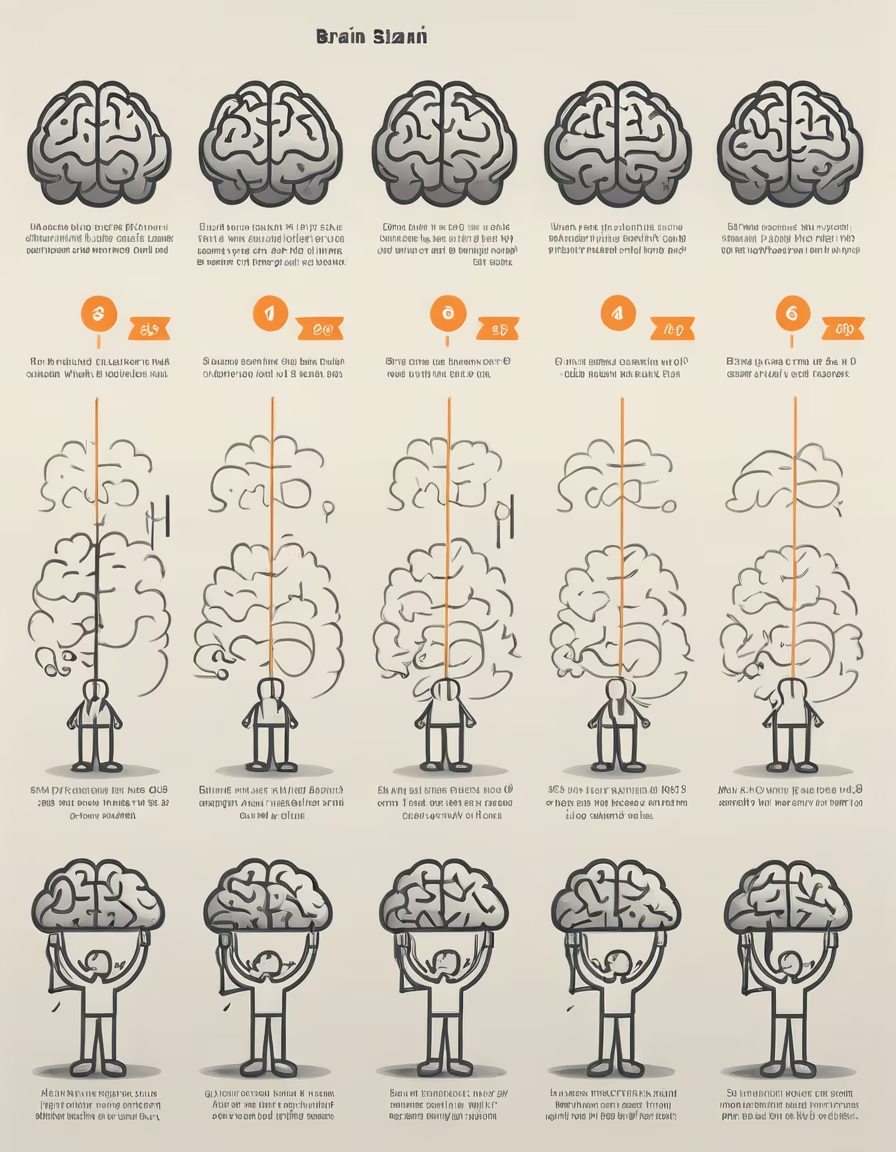



Prompt: An infographic with 5 brain icons showing accurate relative sizes representing brain development from ages 1 to 5. At age 1, draw the smallest brain sized to 25% of adult brain size. At age 2, draw a brain 2 times as large as the 1 year old brain. At age 3, draw a brain 3 times as large as the 1 year old brain. At age 4, draw a brain 3.6 times as large as the 1 year old brain. At age 5, draw the largest brain 6 times as large as the 1 year old brain. Show the percentage below each brai










Prompt: An infographic with 5 brain icons showing accurate relative sizes representing brain development from ages 1 to 5. At age 1, draw the smallest brain sized to 25% of adult brain size. At age 2, draw a brain 2 times as large as the 1 year old brain. At age 3, draw a brain 3 times as large as the 1 year old brain. At age 4, draw a brain 3.6 times as large as the 1 year old brain. At age 5, draw the largest brain 6 times as large as the 1 year old brain. Show the percentage below each brain

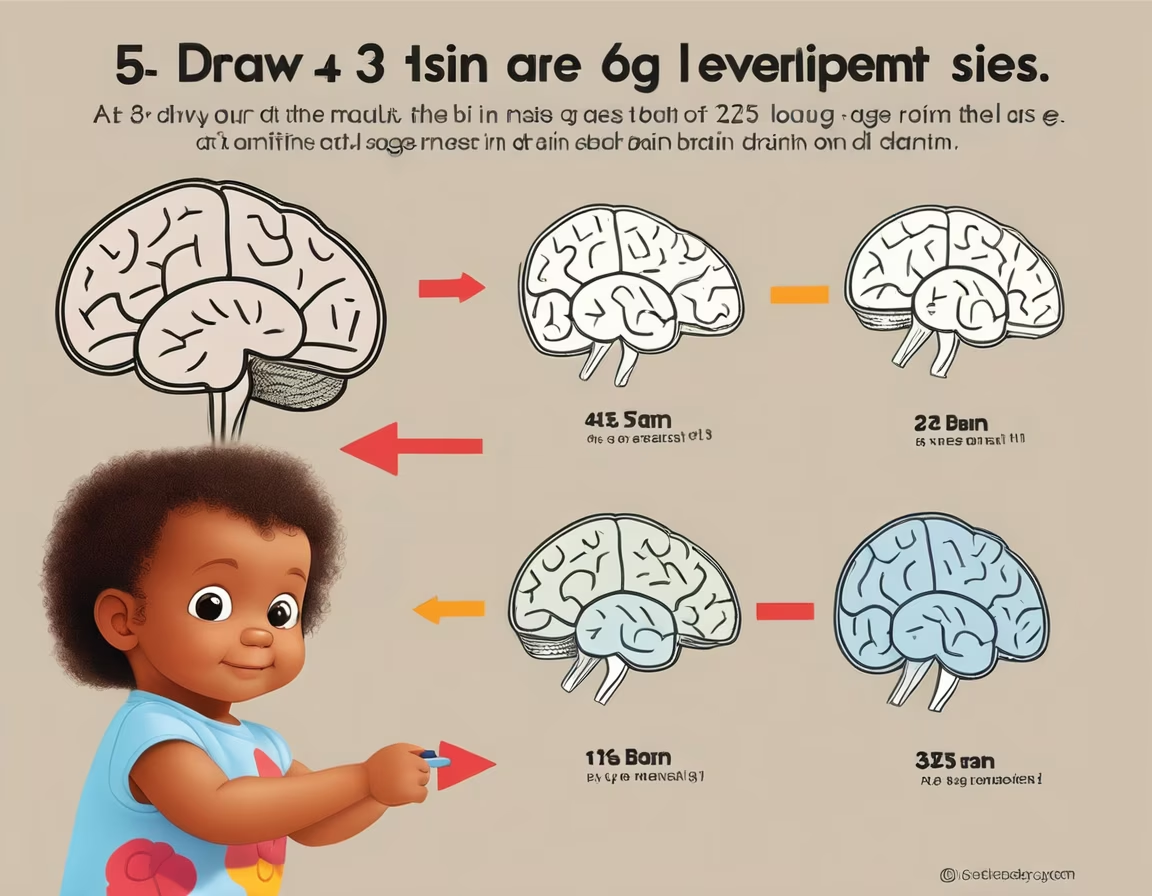
Prompt: Certainly! Here's a description of a simplified line drawing of a profile view of the brain, including its complete structure, with labels for the following five parts: 1. Brainstem, 2. Cerebellum, 3. Limbic System, 4. Basal Ganglia, and 5. Cerebral Cortex. The background color is white, and the drawing will be created using simple lines and the stable diffusion technique. The profile view of the brain features a clean and minimalist white background. The drawing technique employed involves simple lines that outline the various structures of the brain, combined with the subtle texture of stable diffusion. Here are the labeled parts: Brainstem: The brainstem is clearly labeled, positioned at the base of the brain. It is represented by a straight vertical line, indicating its central location within the brain. Cerebellum: Adjacent to the brainstem, the cerebellum is labeled and depicted as a smaller, curved line beneath the brainstem. Its distinctive shape is captured, showcasing its role in motor coordination and balance. Limbic System: The labeled limbic system is represented by a curved line that encircles the innermost region of the brain. While simple, this line suggests the presence of the hippocampus, amygdala, and hypothalamus, which collectively form the limbic system and regulate emotions, memory, and basic physiological functions. Basal Ganglia: Another labeled component, the basal ganglia, is represented by a series of small interconnected lines near the cerebral cortex. These lines indicate the presence of the caudate nucleus, putamen, and globus pallidus, which form the basal ganglia and play a role in motor control. Cerebral Cortex: The labeled cerebral cortex is depicted with a series of wavy lines that cover the upper portion of the brain. These lines represent the outer layer of the brain and suggest the presence of the frontal, parietal, temporal, and occipital lobes, which constitute the cerebral cortex responsible for higher cognitive functions. By utilizing simple lines and the stable diffusion technique, this profile view drawing of the brain with labeled parts on a white background offers a minimalist representation of the brain's structure.






Prompt: The growth experience of males can generally be divided into different stages, each accompanied by changes in physical, psychological, and social development. Here is a general description of the stages of male growth: Infancy (0-2 years): Early development, relying on parental care. Learning basic motor skills such as grasping, crawling, and standing. Early Childhood (3-6 years): Developing language and social skills. Beginning to understand basic social rules and values. Learning basic self-care skills. Childhood (7-12 years): Entering school, starting to acquire knowledge and social skills. Developing cognitive and logical thinking abilities. Forming friendships and social networks. Adolescence (13-19 years): Experiencing the peak of physical development, including voice changes and the growth of body hair. Exploring personal identity and values, forming independent awareness. Starting to establish intimate relationships, experiencing the challenges of first love and friendships. Young Adulthood (20-40 years): Entering the professional career, pursuing education, and career development. Establishing a family, taking responsibility for oneself and family. Developing personal maturity through the ups and downs of life. Middle Age (41-60 years): Facing new stages in career and family life, possibly experiencing the peak of one's career and family maturity. Starting to focus on health issues and redefining life goals. Reassessing personal values and the direction of life. Old Age (60 years and above): Entering retirement, enjoying the later years of life. Possibly facing challenges related to health and physical abilities. Reflecting on life, sharing experiences, and paying attention to the growth of future generations. This is a general categorization, and individual differences and cultural backgrounds can influence the experiences of each growth stage. Each stage is accompanied by learning, adaptation, and development, contributing to the construction of a complete life cycle.
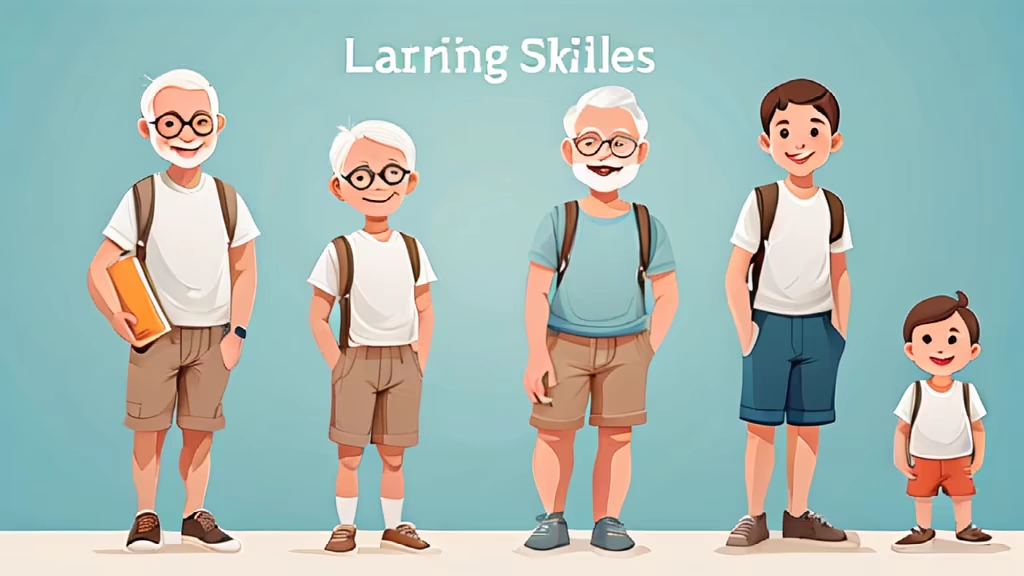

Prompt: Here's a description of a profile view of the brain, including its complete structure, with labels for the following five parts: 1. Brainstem, 2. Cerebellum, 3. Limbic System, 4. Basal Ganglia, and 5. Cerebral Cortex. The background color is white, and the painting technique used is stable diffusion. The profile view of the brain showcases its remarkable structure, painted using stable diffusion on a pristine white background. Let's explore the labeled parts in detail: Brainstem: Positioned at the base of the brain, the brainstem is prominently labeled. It comprises the medulla oblongata, pons, and midbrain. These vital structures regulate essential functions such as breathing, heart rate, and consciousness. Cerebellum: Adjacent to the brainstem, the cerebellum is labeled and stands out with its distinctive texture and shape. This structure is responsible for coordinating movement, balance, and posture. Its intricate folds and lobes add depth and visual interest to the artwork. Limbic System: The labeled limbic system is located deep within the brain. It includes several structures, such as the hippocampus, amygdala, and hypothalamus. This system is associated with emotions, memory, and the regulation of basic physiological functions. Basal Ganglia: Another labeled component of the brain is the basal ganglia, situated at the base of the cerebral cortex. It comprises several interconnected nuclei, including the caudate nucleus, putamen, and globus pallidus. The basal ganglia plays a crucial role in motor control and the coordination of movement. Cerebral Cortex: The labeled cerebral cortex covers the outermost layer of the brain and is responsible for higher cognitive functions. It is divided into distinct lobes, including the frontal, parietal, temporal, and occipital lobes. The cerebral cortex is intricately folded, showcasing its vast surface area.




Prompt: Please generate a clear and concise flowchart that represents the stages of XiaoZongBao's children's educational journey. Stages: 1. Start Node (Circle): - Label: \"Initiate Audio-Visual Focus Training\" - Illustration: A child engaging with XiaoZongBao, playing cards or listening to audio prompts. 2. Stage 1 (Rectangle): - Description: Using XiaoZongBao's Audio-Visual Focus Training System for foundational skill development - Illustration: Depict an interactive scene where the child is using the system effectively. - Arrow Prompt: After successful completion, proceed to the next stage → 3. Decision Node (Diamond): - Description: Assess results and decide on service upgrade - Branches: a) Continuation arrow (loops back to Stage 1): \"Continue Basic Training\" b) Upgrade arrow (points to Stage 2): \"Upgrade to Home Education Consultant Service\" 4. Stage 2 (Rectangle): - Description: Personalized home education guidance to enhance self-directed learning and overall competence - Illustration: Show XiaoZongBao's consultant providing guidance while the child reads or engages in activities. - Arrow Prompt: Upon establishing annual consulting partnership, regularly update growth plan → 5. Stage 3 (Rectangle): - Description: Sign an annual family growth consulting contract to achieve long-term customized guidance - Illustration: Depict a parent signing a contract or making payment with XiaoZongBao's consultant. - Arrow Prompt: Adjust plans annually according to needs, consistently tracking progress → 6. End Node (Oval): - Description: Continuous optimization, accompanying comprehensive child development Style Guidelines: - Ensure clarity and simplicity throughout the flowchart. - Use consistent colors, font sizes, and shapes for visual harmony. - Incorporate keywords and icons to clarify each step. - The arrows should clearly indicate transitions between stages.
Style: Low Poly






Prompt: Title: Blank Autobiographical Mind MapDescription: I'd like to create a mind map representing various stages of my life, but without text. I want the map divided into sections for each significant period, from childhood to adulthood. Use icons, shapes, and colors to illustrate important themes such as education, relationships, professional experiences, etc. Leave each section blank for me to fill in the details later
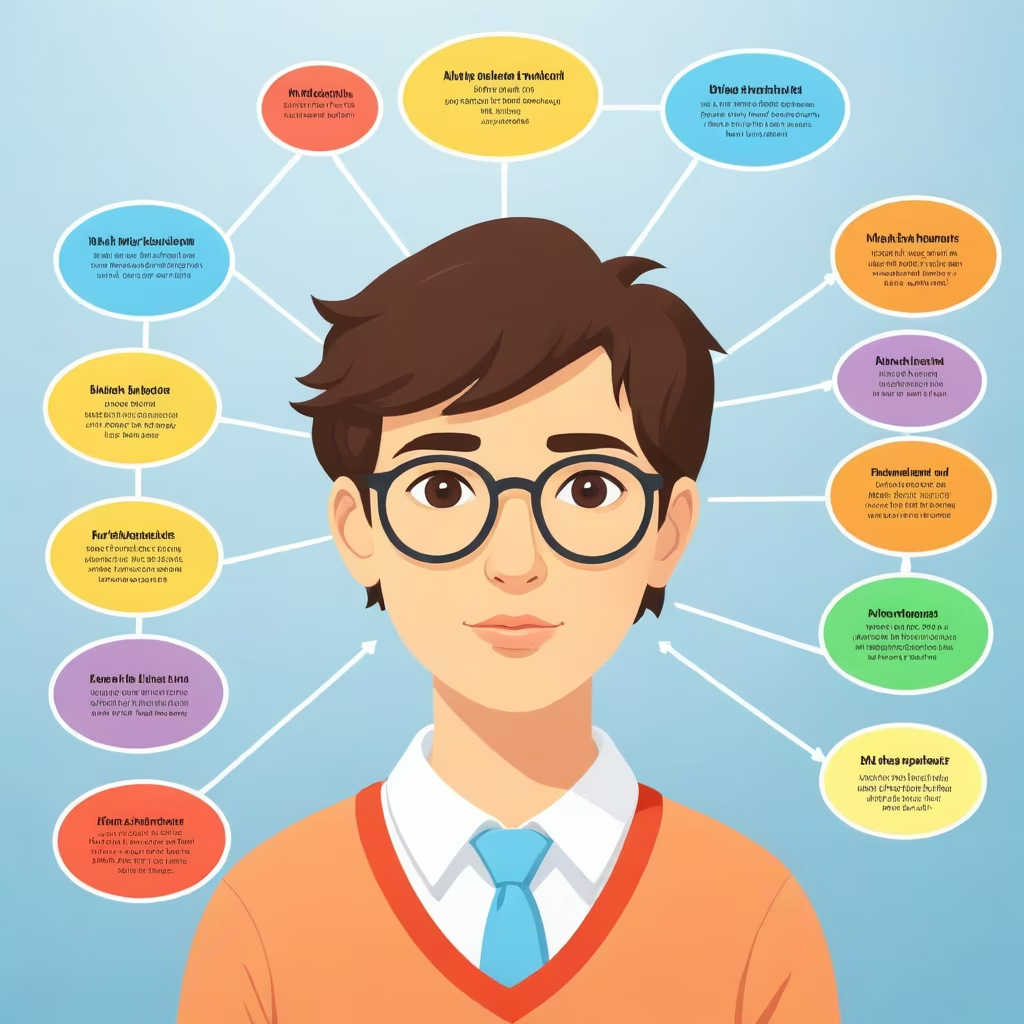

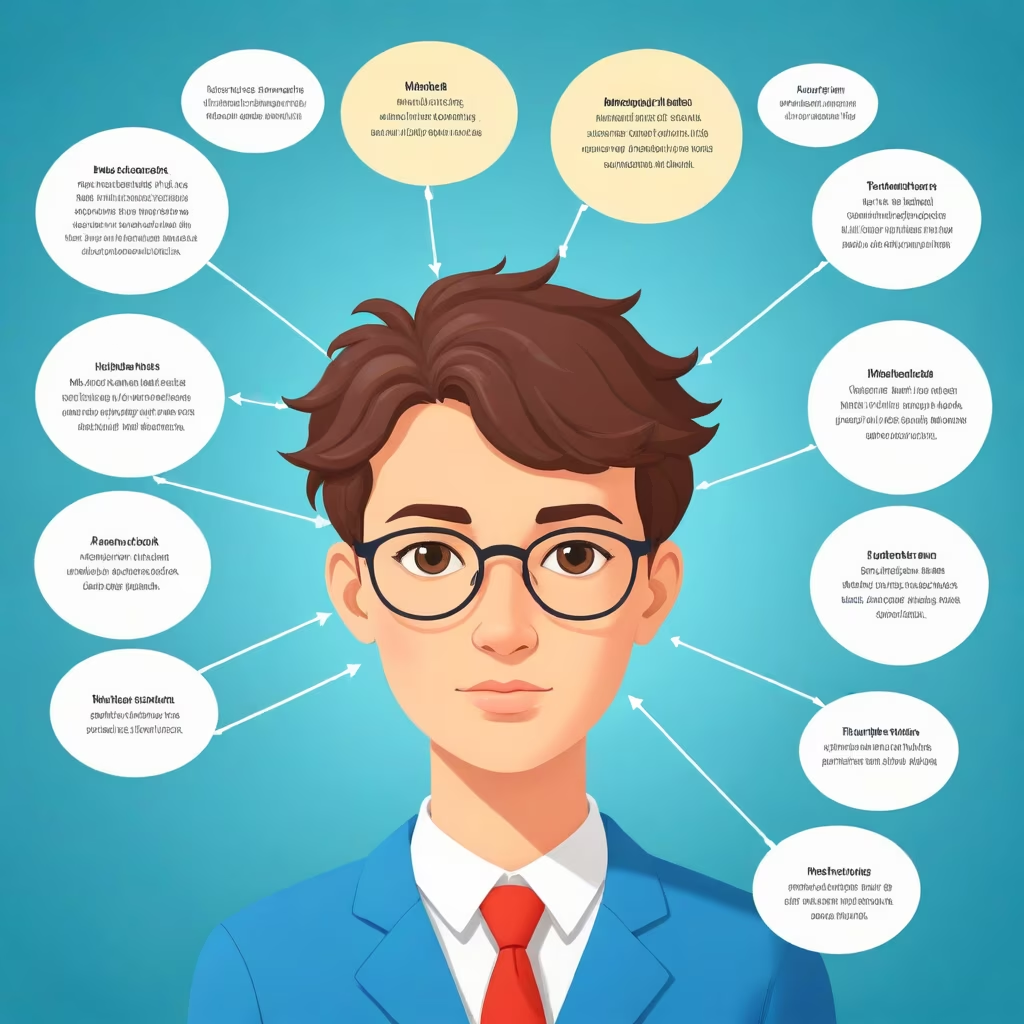





Prompt: Create an engaging and informative visual highlighting the benefits of chess for children. Feature a vibrant and playful design with illustrations of children engaging in chess, accompanied by icons or graphics representing cognitive skills (like a brain), emotional growth (like a heart), and social interaction (like two hands shaking). Use a bright and inviting color palette that complements the LearnChess Academy's colors (#E7B121 and #030829). Add an inspiring title like \"Chess: Shaping Young Minds for a Brighter Future.\"


Prompt: Image6 #picturebook #comic #coherence #continuity Science infographic showing neural proteins entering small monkey brain
Style: Line Art


Prompt: A 4-year-old child, sitting three meters in front of a computer watching TV, depicts the neural pathways on her brain.




Prompt: A 4-year-old child, sitting three meters in front of a computer watching TV, depicts the neural pathways on her brain.








Prompt: A 4-year-old child, sitting three meters in front of a computer watching TV, depicts the neural pathways on her brain.




Prompt: [Before the age of five, you were lively and innocent and curious about everything. Your childhood was spent in daily play, you had many friends and you had no worries.], joyful innocence, carefree days, curiosity-filled exploration, minimalist style, vector illustration, vibrant and playful color palette, dynamic composition.


Prompt: Image6 #picturebook #coherence #continuity Science infographic showing neural proteins entering small squirrel brain,occupying 1/10 of the image,minimal background with light blue color
Style: Digital Art






Prompt: Image 4:#picturebook #coherence #continuity A detailed diagram of brain structure.The father smiling and explaining to the little cartoon squirrel about how brain neurons connect. Prompt: A father squirrel teaching his child...
Style: Digital Art








Prompt: A 4-year-old child, sitting three meters far away from a computer watching TV, depicts the neural pathways on her brain.












Prompt: A 4-year-old child, sitting three meters in front of a computer watching TV, depicts the neural pathways in her brain.








Prompt: \"Children building imaginative block sculptures, symbolizing young brains making new connections. Digital illustration






Prompt: Disney Pixar style image. two newborn children and divide them into the one born with creative talent and mind and the one with practical and technical mind.




Prompt: Only the brain, with a frequency waveform chart displayed above it. The brain has a transparent quality, and the waveform chart exhibits a luminous feel. gradient_background
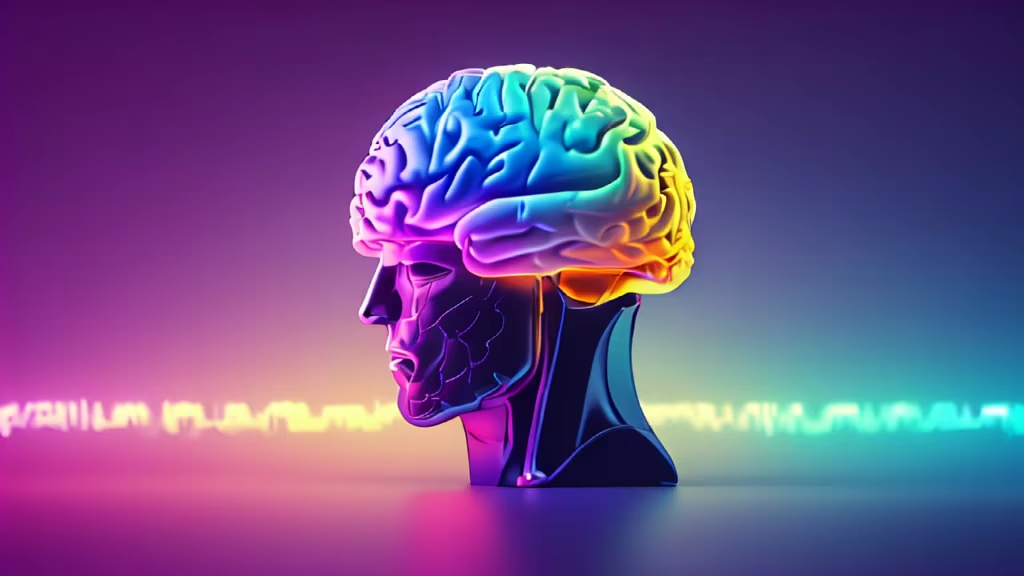

Prompt: Pixar Disney style image. Two newborn children and divide them into the one born with creative talent and mind and the one with practical and technical mind.



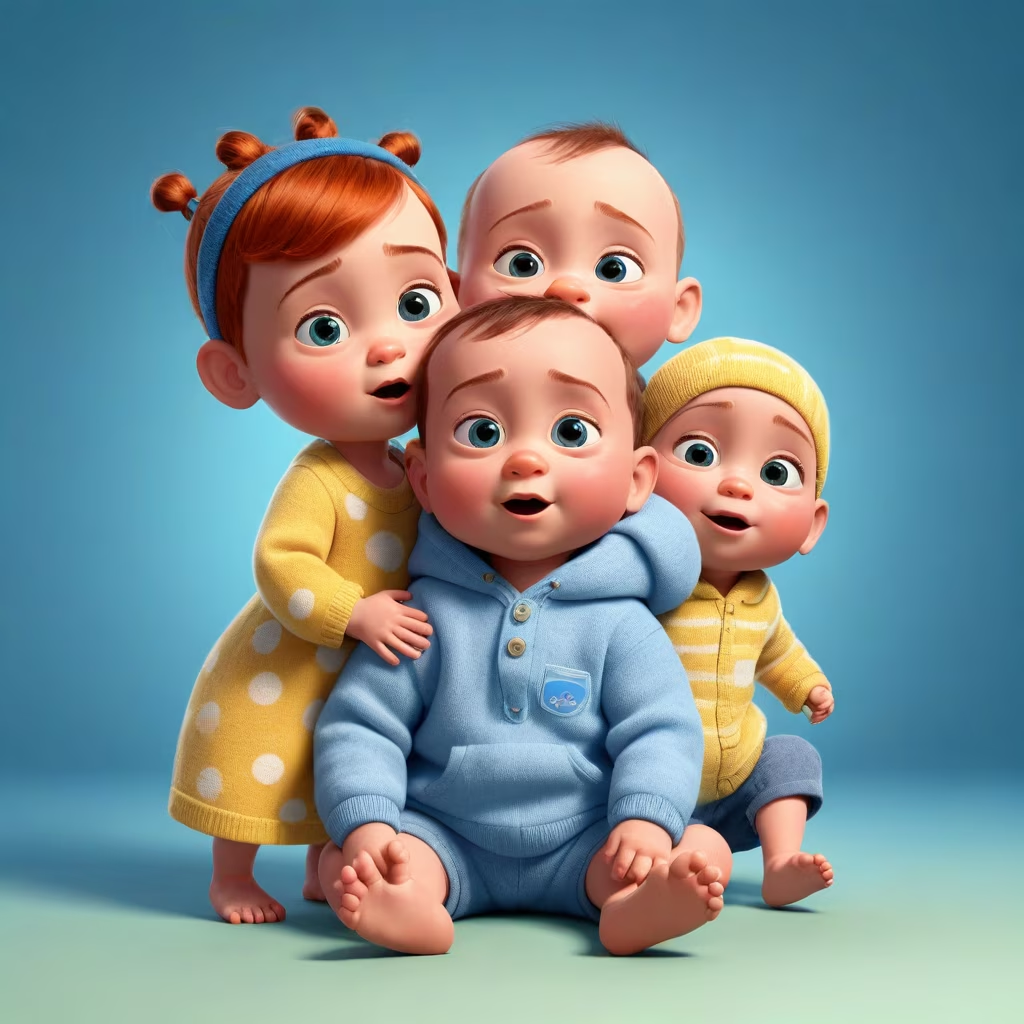
Prompt: Image6 #picturebook #comic #coherence #continuity Science infographic showing neural proteins entering small monkey brain
Style: Digital Art











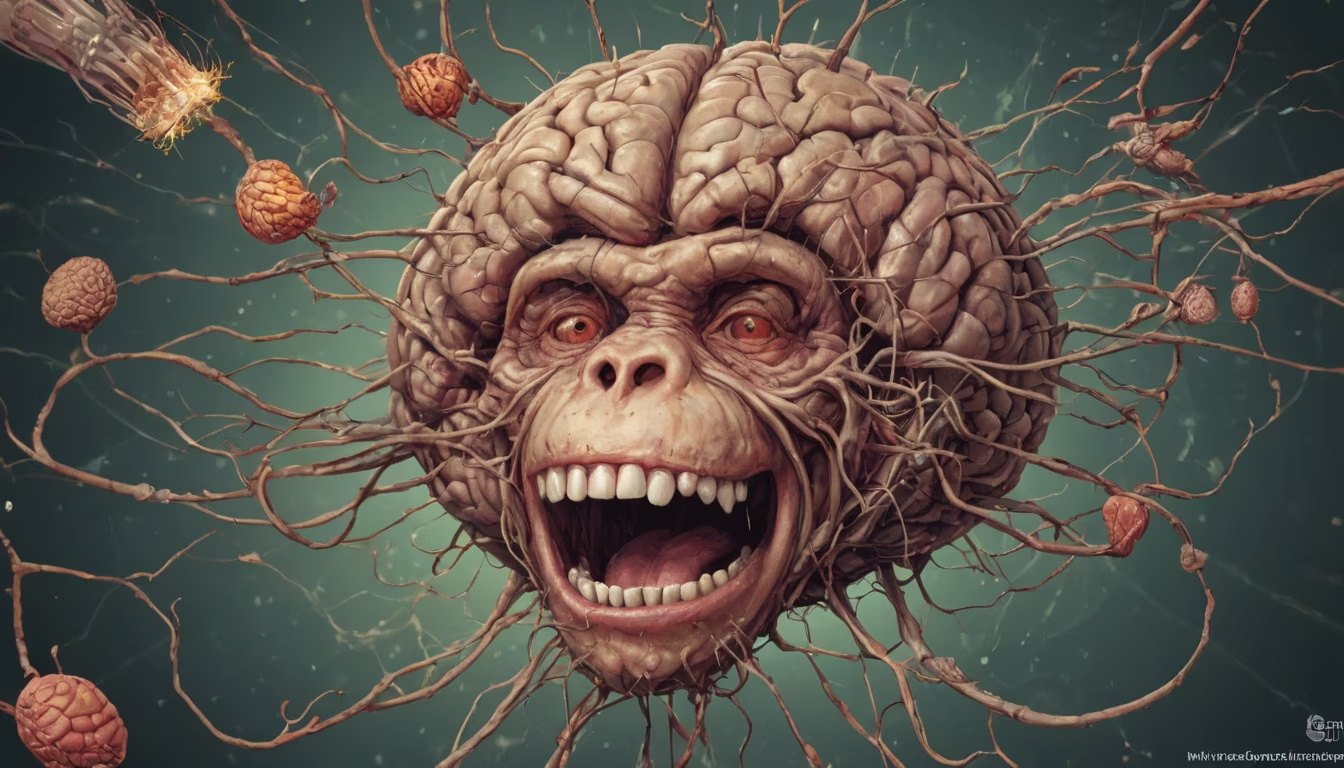







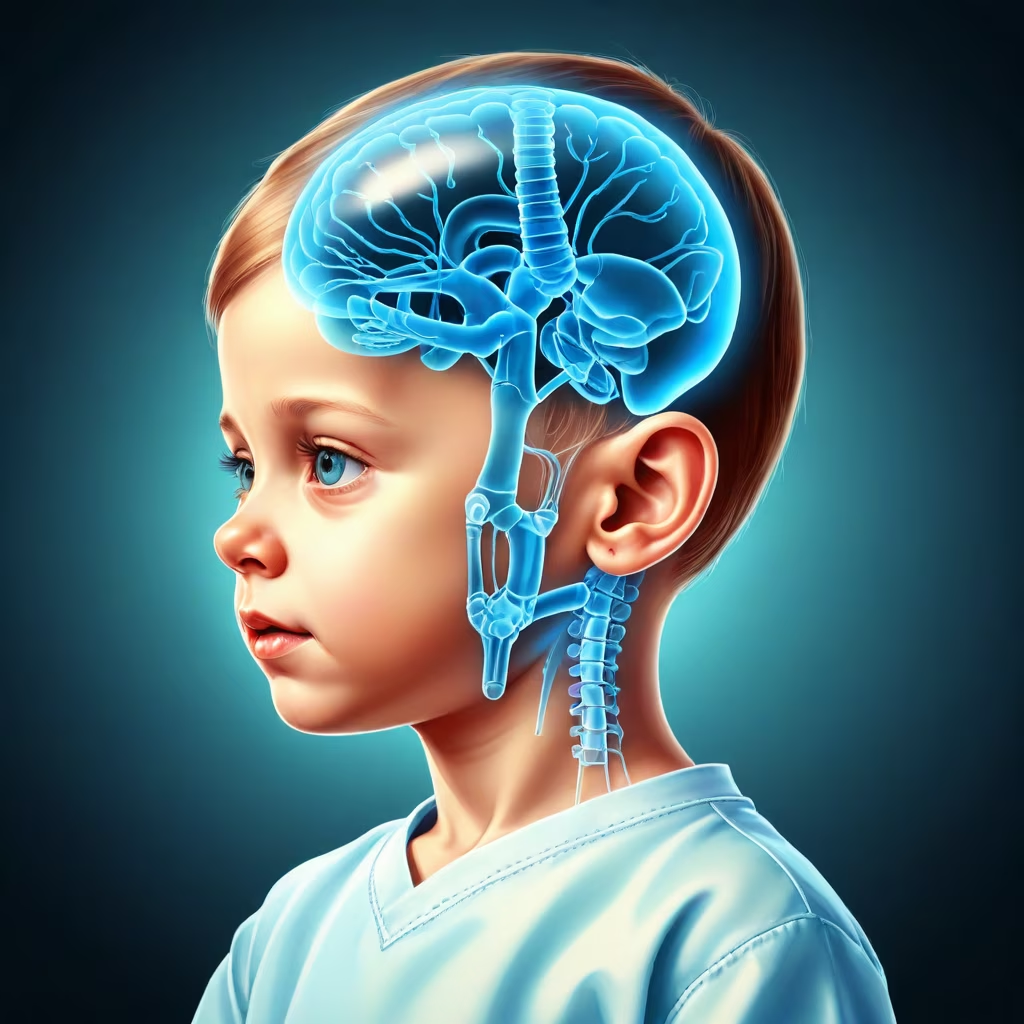
Prompt: Teen kid boy face construction kit for creating various facial emotions and expression - eye slit, lips and brows position. Cartoon vector illustration set of customizable head elements of cute child, 16K ultra high resolution, ultra detailed, ultra shapren, medium vibrant saturation and very high-quality image
Style: Digital Art


Prompt: Neuroplasticity - Comparative MRI scans showing structural changes in brain regions due to neuroplastic effects over time. minimal background with light blue color
Style: Digital Art






Prompt: Pixar Disney style image. Two newborn children, one born with creative talent and mind and the one with practical and technical mind.


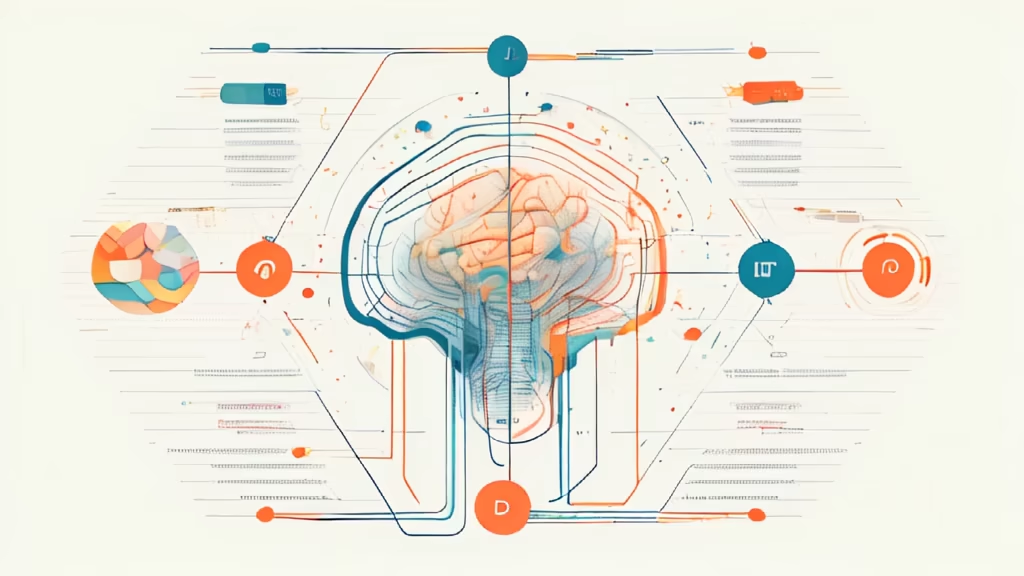
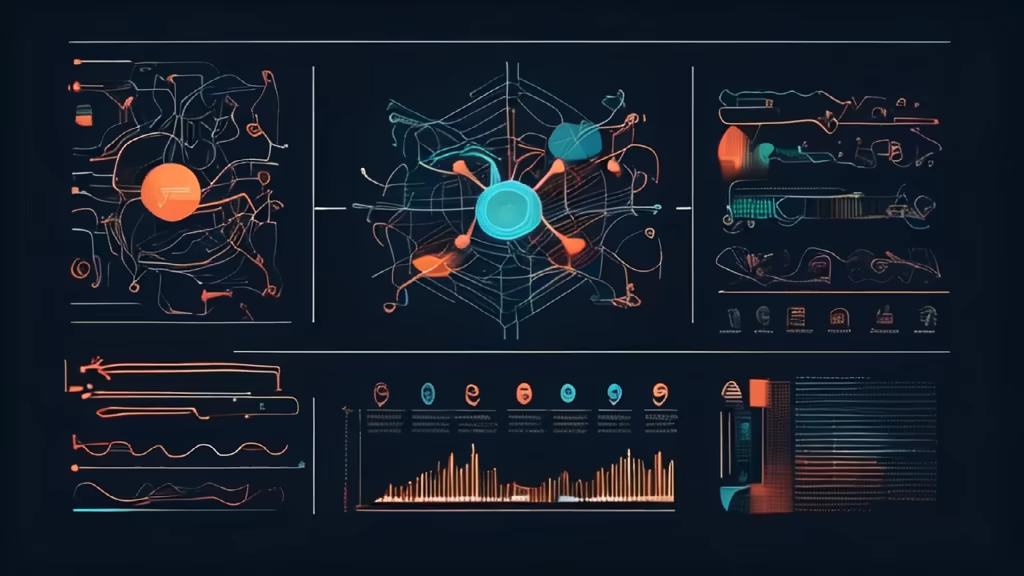
Prompt: The same woman at four different age stages, specifically 5 years.20 years, 40 years, and 60 years. Generate one image for each agestage separately. Do not change anything else except the age. Usethe same seed for all images. Keep the hair the same, and everythingelse consistent, only adjust the age


Prompt: The same woman at four different age stages, specifically 5 years.20 years, 40 years, and 60 years. Generate one image for each agestage separately. Do not change anything else except the age. Usethe same seed for all images. Keep the hair the same, and everythingelse consistent, only adjust the age
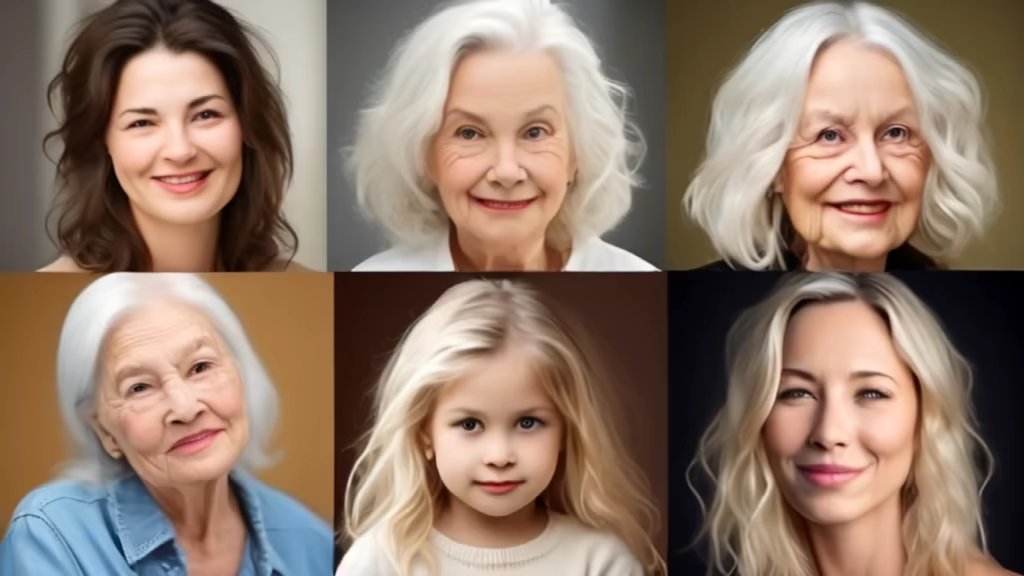

Prompt: The same woman at four different age stages, specifically 5 years.20 years, 40 years, and 60 years. Generate one image for each agestage separately. Do not change anything else except the age. Usethe same seed for all images. Keep the hair the same, and everythingelse consistent, only adjust the age

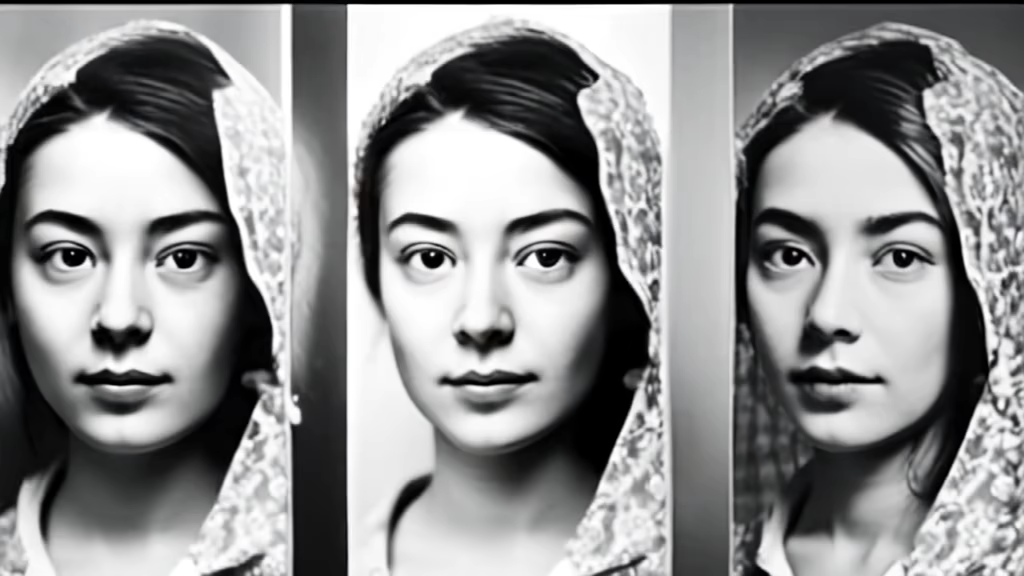
Prompt: A 4 years old girl who stayed away from cell phones, depict neural pathways lighting up in her brain. Digital drawing








Prompt: letter s , green letter , green apple , vineyard , vine , green , realistic, detailed, enhanced, cinematic shot,






Prompt: digital art by lois van baarle, loish, ross tran, rossdraws, sam yang, samdoesarts, artgerm. highly detailed, intricate, smooth. HDR
Negative: bad anatomy,
Style: Comic Book


Prompt: Create an impactful image illustrating the perplexing phenomenon of rising mortality rates among young, working-age individuals with life insurance in the aftermath of the COVID-19 pandemic. Incorporate elements such as a dual-line graph depicting the decline in COVID-19-related deaths versus the surge in mortality rates among the specified demographic. Consider symbolic visuals representing pandemic measures, vaccine safety concerns, and broader societal implications. The image should evoke a sense of urgency and the need for a thorough investigation into the unexpected trend




Prompt: Simple, minimalistic closeup color illustration shows What can parents do to help their children learn to manage their personal finances
Negative: currency symbols


Prompt: Simple, minimalistic closeup color illustration shows What can parents do to help their children learn to manage their personal finances

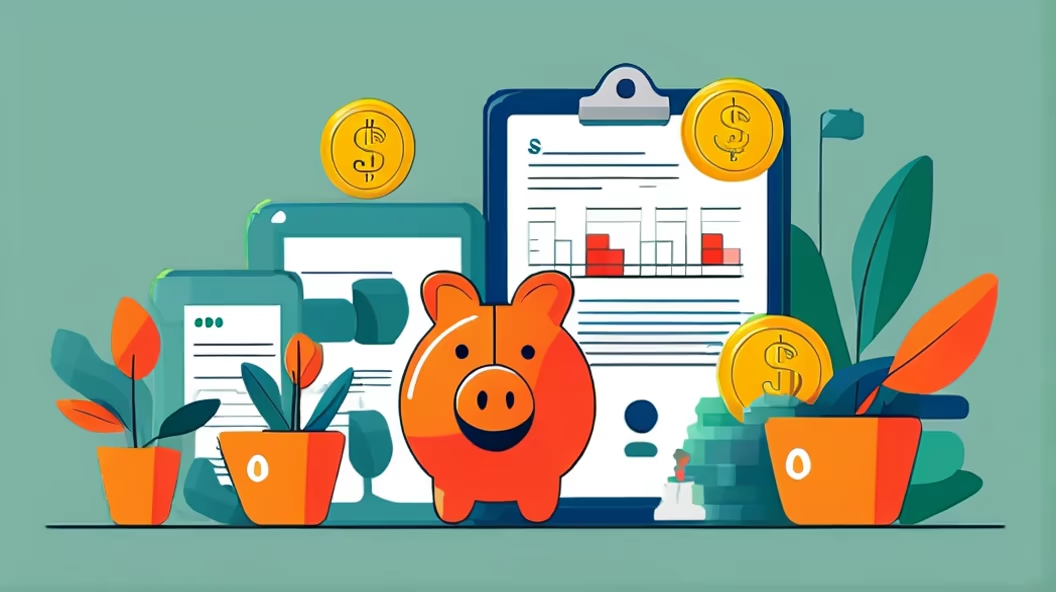
Prompt: Simple, minimalistic closeup color illustration shows What can parents do to help their children learn to manage their personal finances




Prompt: A map of a human brain, where the blood vessels are roads, the brain regions are parks, and the neurons are houses and buildings. The map has the regular colors and characteristics of a map of a city or country, such as labels, symbols, and borders. The map is in a 9:16 aspect ratio. The map has a realistic style and theme, with detailed textures and fonts. The map is named 'Cerebrum City' and has some landmarks, such as the 'Frontal Lobe Plaza', the 'Hippocampus Lake', and the 'Corpus Callosum Bridge'.






Prompt: showing a Chinese teacher is helping one child while losing sight of the other children in an early childcare center, 8k, wide, line art, ultra-detailed, masterpiece quality, realistic face, seed: 3460859320
Style: Line Art


Prompt: a baby turning into a toddler then by teenager to an adult, from an adult turning into an old lady. At least 5 character needed





